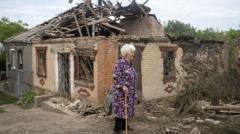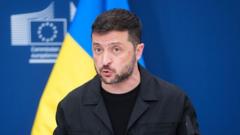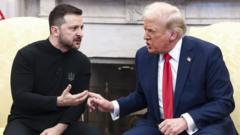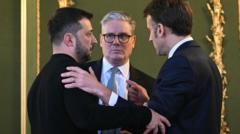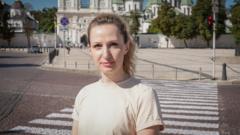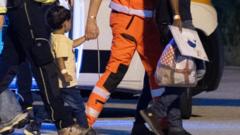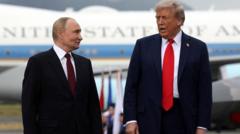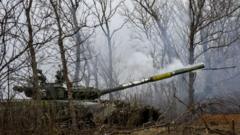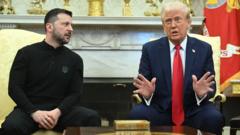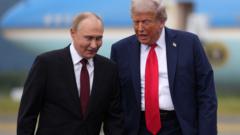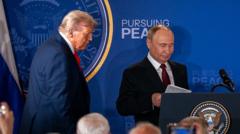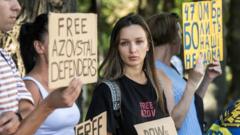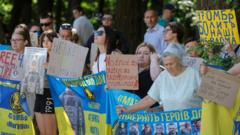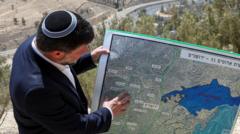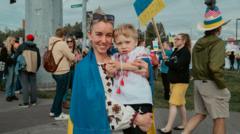Pope Leo XIV, a native Chicagoan and Augustinian priest, begins his papacy amidst widespread interest from global leaders and the Catholic community as he addresses pressing issues.
**Historic Inaugural Mass for Pope Leo XIV Draws Global Attention**

**Historic Inaugural Mass for Pope Leo XIV Draws Global Attention**
The first American pope's official ceremony at St. Peter's Square includes dignitaries and faithful, marking a pivotal moment in the Catholic Church.
In a historic event marking the outset of his pontificate, Pope Leo XIV presided over his inaugural Mass at St. Peter's Square, attracting a gathering of world leaders and dedicated Catholic followers. Among the notable attendees was U.S. Vice President JD Vance, symbolizing a potential diplomatic bridge between the Vatican and American conservative Catholics.
Pope Leo, born Robert Francis Prevost, made headlines as the first American to ascend to this role, a development that surprises many given the traditional norms surrounding papal selections. His election challenges the assumptions that a cardinal from a global superpower would not be chosen for such an influential position.
As the newly appointed leader of 1.4 billion Catholics, Pope Leo outlined early priorities for his papacy. Stressing the need to address the perils of artificial intelligence, he echoed calls from his predecessor, Pope Francis, to work towards peace in conflict-ridden areas such as Ukraine and Gaza, and to prioritize the voices of ordinary people within the Church.
Significant figures at the ceremony included Ukraine's President Volodymyr Zelensky and Canadian Prime Minister Mark Carney, highlighting the Mass’s global significance. Attendees braved security checks to witness the ceremonial Mass that commenced with a prayer at the tomb of St. Peter, layering the historical atmosphere with deep ecclesiastical meaning.
Pope Leo’s identity, deeply rooted in his early experiences as an Augustinian missionary, positions him uniquely to advocate for outreach and inclusive dialogue within the Church, traits emphasized by fellow Augustinians.
As the ceremony unfolded, with enthusiastic crowds chanting "Leone! Leone!", Leo traversed St. Peter's Square in a ceremonial popemobile, an emblem of his role and accessibility to the faithful. Following the Mass, he faced the challenge of uniting a sometimes fragmented Church in the U.S. amidst shifting political landscapes and diverging ideologies.
As commentators and analysts watch closely, Pope Leo XIV's early actions and strategic decisions will likely shape not only his papacy but also the broader relationship between the Vatican and various political factions, both in America and around the globe. His focus on social justice, dignity of labor, and modern technological challenges places him at a crossroads of contemporary issues and timeless faith, setting the stage for an engaging and potentially transformative papacy.
Pope Leo, born Robert Francis Prevost, made headlines as the first American to ascend to this role, a development that surprises many given the traditional norms surrounding papal selections. His election challenges the assumptions that a cardinal from a global superpower would not be chosen for such an influential position.
As the newly appointed leader of 1.4 billion Catholics, Pope Leo outlined early priorities for his papacy. Stressing the need to address the perils of artificial intelligence, he echoed calls from his predecessor, Pope Francis, to work towards peace in conflict-ridden areas such as Ukraine and Gaza, and to prioritize the voices of ordinary people within the Church.
Significant figures at the ceremony included Ukraine's President Volodymyr Zelensky and Canadian Prime Minister Mark Carney, highlighting the Mass’s global significance. Attendees braved security checks to witness the ceremonial Mass that commenced with a prayer at the tomb of St. Peter, layering the historical atmosphere with deep ecclesiastical meaning.
Pope Leo’s identity, deeply rooted in his early experiences as an Augustinian missionary, positions him uniquely to advocate for outreach and inclusive dialogue within the Church, traits emphasized by fellow Augustinians.
As the ceremony unfolded, with enthusiastic crowds chanting "Leone! Leone!", Leo traversed St. Peter's Square in a ceremonial popemobile, an emblem of his role and accessibility to the faithful. Following the Mass, he faced the challenge of uniting a sometimes fragmented Church in the U.S. amidst shifting political landscapes and diverging ideologies.
As commentators and analysts watch closely, Pope Leo XIV's early actions and strategic decisions will likely shape not only his papacy but also the broader relationship between the Vatican and various political factions, both in America and around the globe. His focus on social justice, dignity of labor, and modern technological challenges places him at a crossroads of contemporary issues and timeless faith, setting the stage for an engaging and potentially transformative papacy.

